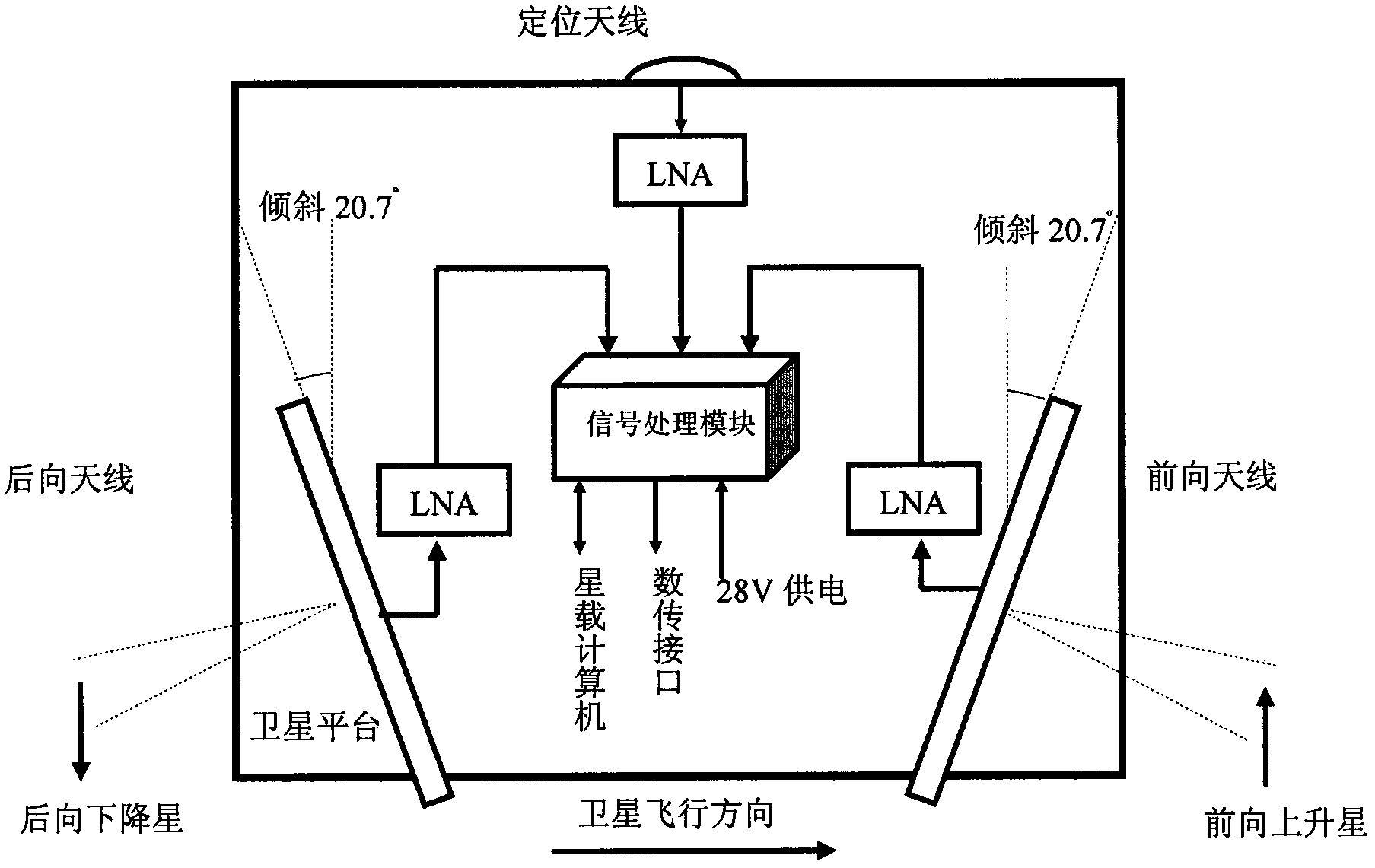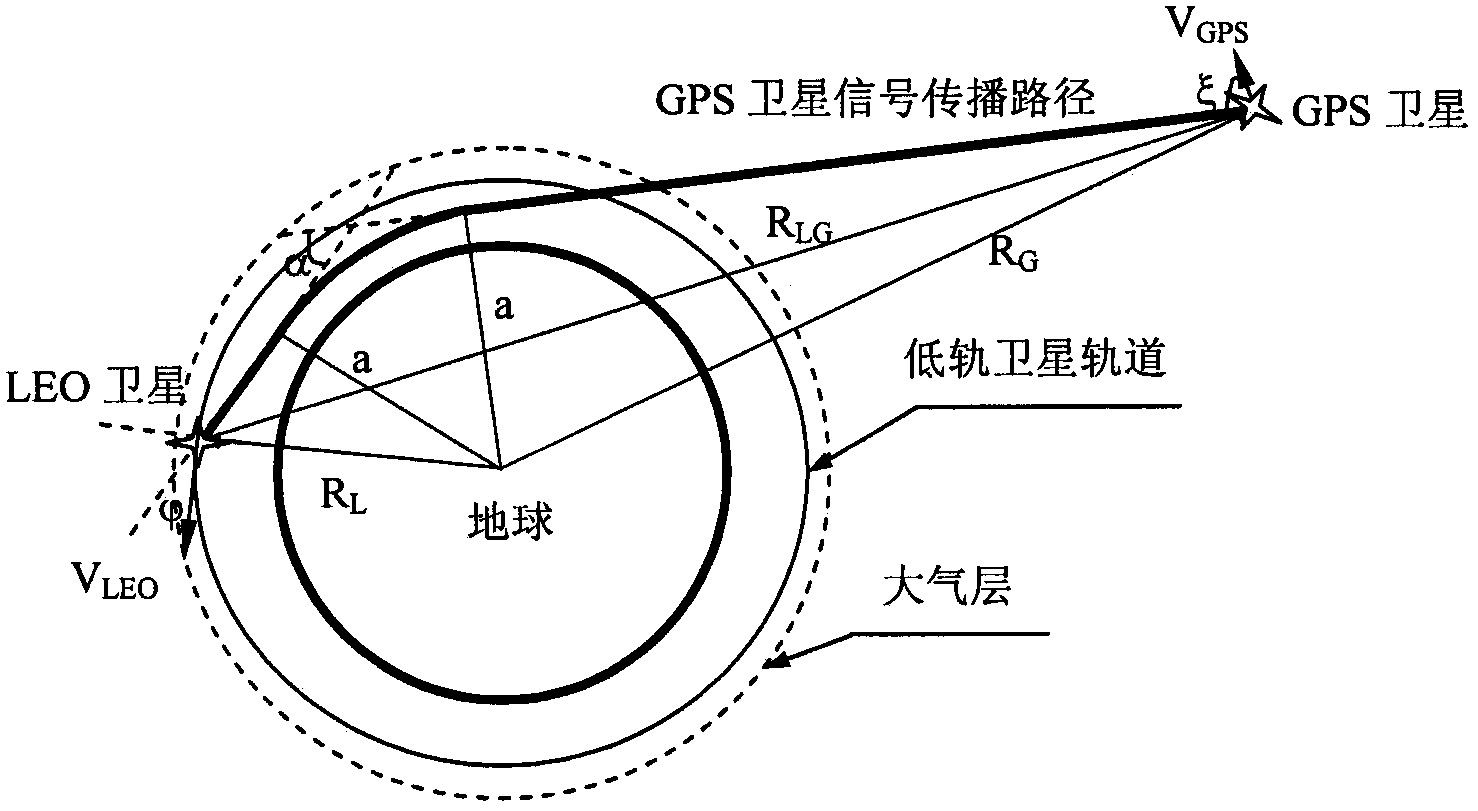A Spaceborne Ionospheric Scintillation Monitoring Device Using GPS Signal Phase Change
A GPS signal and monitoring device technology, which is applied in the field of spaceborne ionospheric scintillation monitoring devices, can solve the problems that it is difficult to quickly obtain the global atmosphere, complete coverage of the monitoring area, and unsatisfactory
- Summary
- Abstract
- Description
- Claims
- Application Information
AI Technical Summary
Problems solved by technology
Method used
Image
Examples
Embodiment Construction
[0052] The monitoring device of the present invention is mounted on a low-orbit satellite, and performs data processing on navigation signals to obtain ionospheric scintillation detection parameters, obtain ionospheric distribution conditions, and improve ionospheric scintillation and disturbance detection levels.
[0053] The flight altitude of the low-orbit satellite is about 790 kilometers from the ground in an approximate elliptical orbit, and the flight period is about 100 minutes. According to the relevant orbital parameters of the satellite, the relative position relationship between the low-orbit satellite and the GPS satellite can be found in figure 2 , it can be seen from the figure that the GPS satellite signal passes through the atmospheric refraction and scattering, passes through part of the ionosphere to reach the low-orbit flying satellite, and installs an antenna capable of receiving the GPS signal on the satellite, which can receive the refraction and scatteri...
PUM
 Login to View More
Login to View More Abstract
Description
Claims
Application Information
 Login to View More
Login to View More - R&D
- Intellectual Property
- Life Sciences
- Materials
- Tech Scout
- Unparalleled Data Quality
- Higher Quality Content
- 60% Fewer Hallucinations
Browse by: Latest US Patents, China's latest patents, Technical Efficacy Thesaurus, Application Domain, Technology Topic, Popular Technical Reports.
© 2025 PatSnap. All rights reserved.Legal|Privacy policy|Modern Slavery Act Transparency Statement|Sitemap|About US| Contact US: help@patsnap.com



